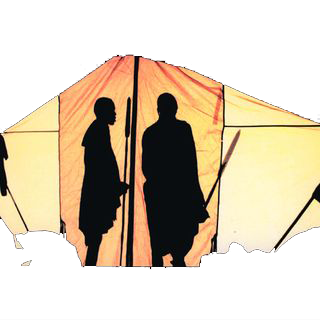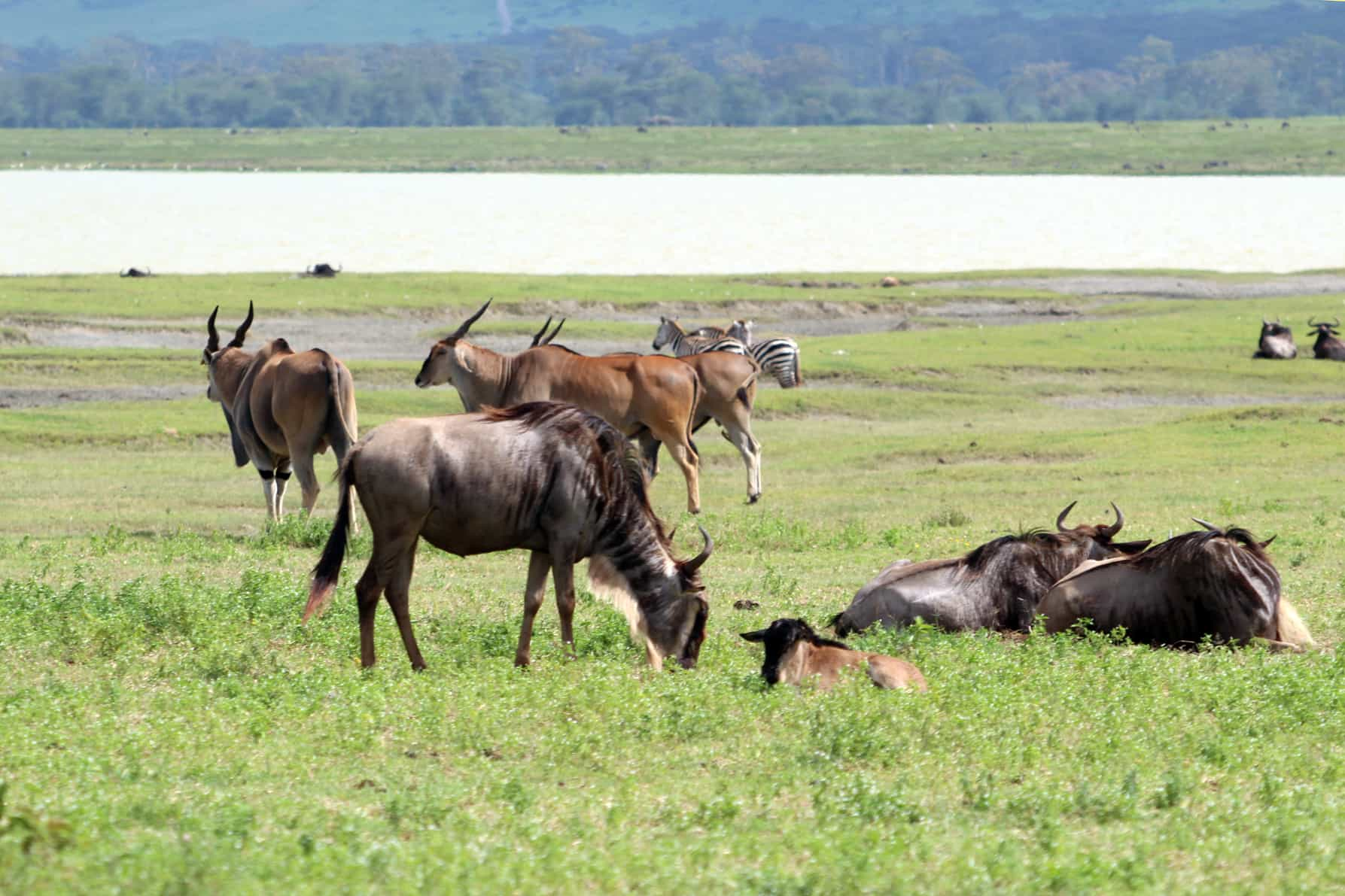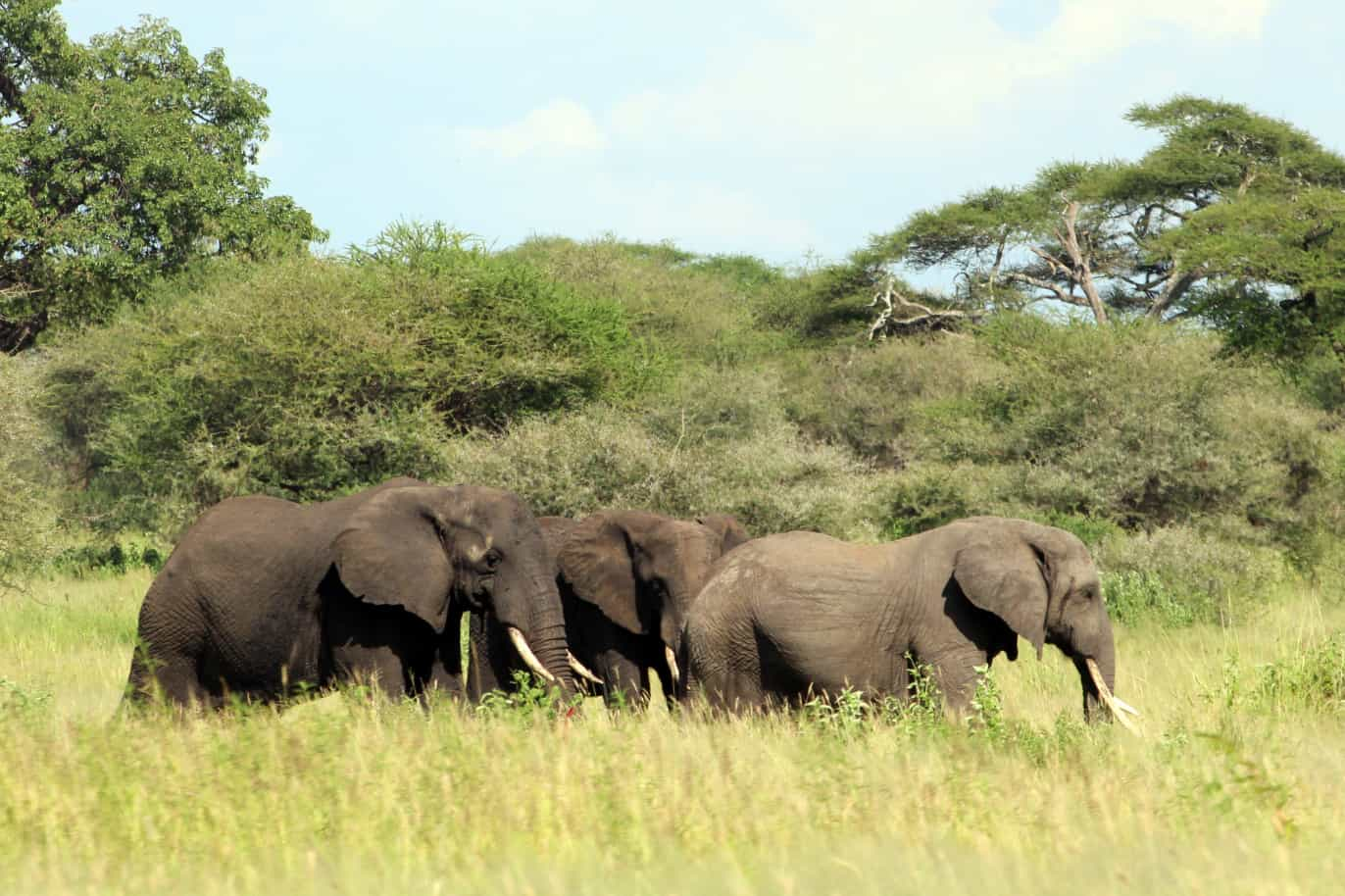In Tanzania, the wildlife scene changes with the seasons, offering enthusiasts a plethora of opportunities to witness the country's rich biodiversity. From the wildebeest migration in the Serengeti to the nesting of sea turtles along the coast, each month presents distinct wildlife experiences. In this article, we'll delve into the best wildlife activities to pursue in Tanzania throughout the year, highlighting the prime times to encounter iconic species.
January
After the Vuli rains which come anytime between late October and Christmas, the parks across Tanzania begin to burst into life again. Most will have been drying out since July and many areas will have been burned as a policy decision by park rangers to encourage new growth and prevent dangerous fires later on. Parks can often look pretty ugly by September and life is usually tough for the animals searching for water and the remaining graze.
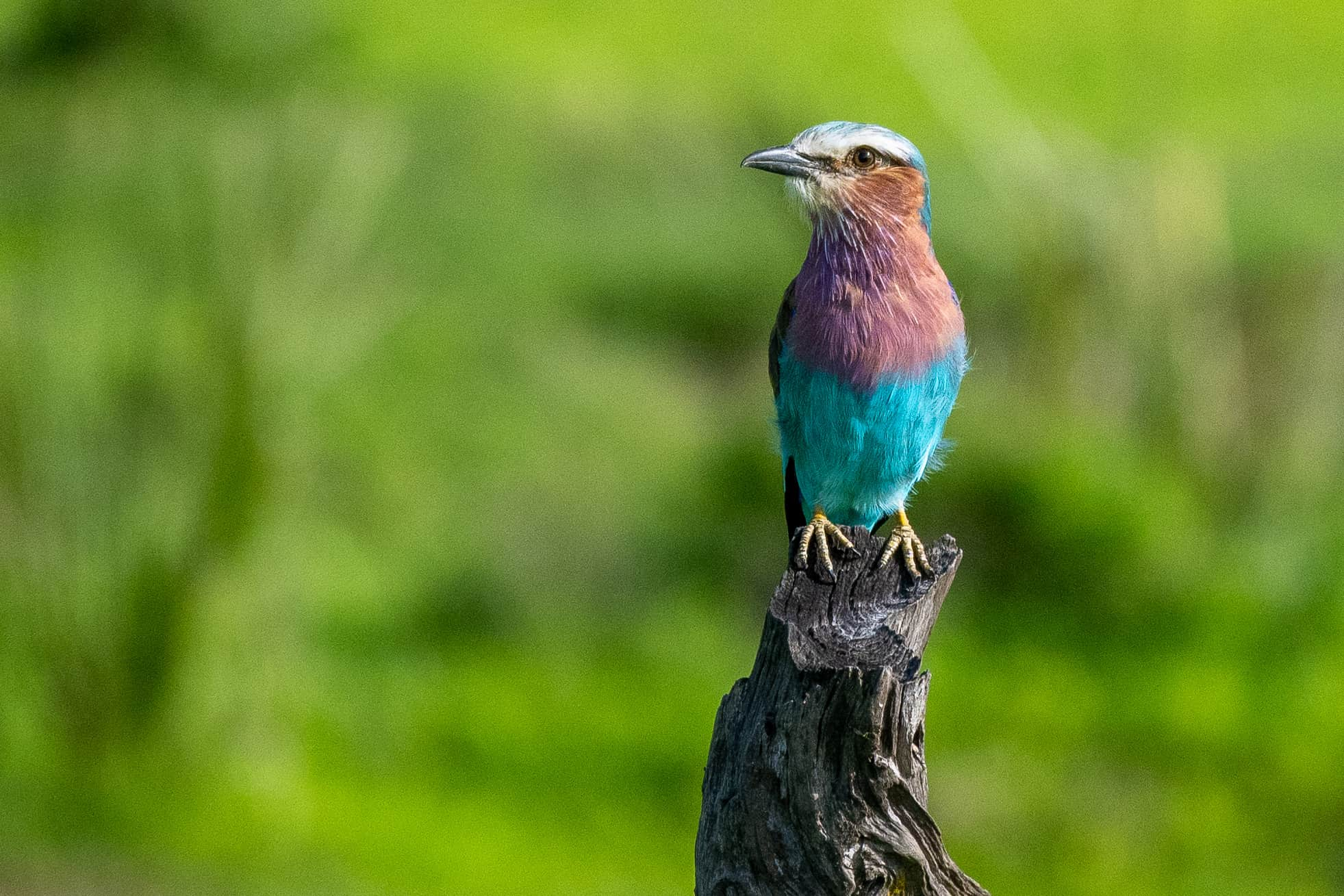
January should see the green season already in full flow. This is a stunning time of year, when the parks are green and lush but the grass is still short and nutritious. Most parks have seen the delivery of their annual young (the migrating wildebeest of the Serengeti being the one major exception) and the general abundance of life feels like Spring in the northern hemisphere.
Sitting at 4000-5000 feet above seas level, Lake Victoria and the northern parks remain cold in the early mornings, hot in the middle of the day and cool in the evening. The quieter parks such as Nyerere and Saadani, near the coast, become hotter and with some humidity at this time of year.

STAR OF THE MONTH: NYERERE NATIONAL PARK (SELOUS GAME RESERVE)
The arrival of the carmine bee-eaters in Selous Nyerere can, at times, be a truly emotional experience. There are several spots in the park where they usually congregate and, once the first dazzling bird decides to follow the vehicle in pursuit of disturbed insects, hundreds may follow. They swoop and glide in huge numbers, passing just a metre or so from the open Land Rover filled with lit up faces.
By mid-January, the Nyasaland wildebeest have all dropped their young and this focuses the park’s wild dogs on the herds. The early part of the year is the best time for seeing the painted wolves which can conserve energy with easier hunting opportunities. They are famed for covering vast distances in search of prey and even chasing their quarry and mean running at speed for several kilometres. Once the wildebeest drop their young in December and January, wild dogs can afford to operate in a smaller area, following the herds with vulnerable calves.
Finally, our Sable Mountain Lodge, received its name because it touches one of the few areas where the magnificent and extremely rare Roosevelt sable antelope can be seen. The mature males are a stunning velvety black, with white markings on the face and rear, whilst the females are brown very like roan antelope. There are only three sites in the world known to harbour Roosevelt’s sable antelope; a small population of 100 or so in Shimba Hills, near the Mombasa coast of Kenya, a similar number in the unique national Park of Saadani on the Tanzania coast and perhaps 1000 in Selous – Nyerere. Throughout the dry season, they feed among the miombo trees which dominate the inaccessible hills of western Selous Nyerere, but towards the end of the year several breeding herds move to the area between Sable Mountain and the Matambwe ranger post and can usually be seen for several days at a time during December, January and February.

Recommended safari tour:
Southern Tanzania Safari, Selous and Saadani
February
February is the heart of the green season lying perfectly between the short Vuli rians of November and the main Masika rains of April & May. The parks are usually at their most beautiful and teeming with young animals, born to time with the fresh grass and plentiful water supply.
To many who know best Tanzania and its amazing safari parks, this is the time of year to visit. The sheer volume of wildlife, the abundance of the vegetation and, perhaps best of all, the lack of other visitors makes the Tanzanian green season very attractive. Whether it is the fear that it is sandwiched by two wet periods, an aversion to increased humidity or simply a propensity to travel less in the Northern hemisphere winter, this time of year is blissfully quiet but infinitely worth a visit.
In Selous/Nyerere a patchwork of open grassland, acacia woodland and palm-fringed lakes makes the national park appear like a 50,000sqkm golf course overrun with zebra, wildebeest, giraffe and impala. Saadani, which can struggle for wildlife when dry is bountiful and may produce elephant herds in the hundreds.
STAR OF THE MONTH: THE SERENGETI CALVINGS
There are many reasons to visit Tanzania in February, but nothing can compare with the spectacle underway in the South-East of the Serengeti eco-system. If truth be known, there is very little to compare with the calvings in Kusini across the globe and at any time of year.
The magic comes from three points; the sheer density of large mammalian life, the absence of other visitors to share the space and the lack of any kind of infrastructure outside the fabulously isolated Bush Rover Camp. There are no roads beyond our own tyre tracks and, as such, we simply head out through the herds regularly bumping into predators whose numbers have swelled to take advantage of pregnant mothers and so many vulnerable young animals.
Cheetahs are found here in numbers reminiscent of a bygone time. Critically endangered across most of their range, these agile speed machines still thrive around the fringes of the woodland patches in Kusini, looking out, often from old termite mounds, for their regular prey, Thomson’s gazelle. During February, hundreds of thousands of new-born wildebeest provide an almost unimaginable bounty for the cats.
Hundreds, if not thousands of calves, simply lose their mother’s in the chaos of the event and are helpless against the advances of hyenas which appear to be lurking in every ditch out on the open plains. With so much competition from the hyenas, lion prides are often large and controlled by cohorts of up to five males.
The earth is often soft from the rain which nourishes fresh grasses for the endless lines of grazers. Add a blanket of fresh faeces and conditions are near perfect for the entire floor to move. In every direction, in every tiny patch of landscape in view, chunky beetles roll their dung balls, stopping now and then to mount the sphere and spin 360. Eventually, they chose a spot to dig into the dirt and leave their larvae encased in a nutritious meal.
There is probably no opportunity left on earth to witness such a remarkable wildlife spectacle as the migrating wildebeest giving birth in such numbers with so few others to witness it.
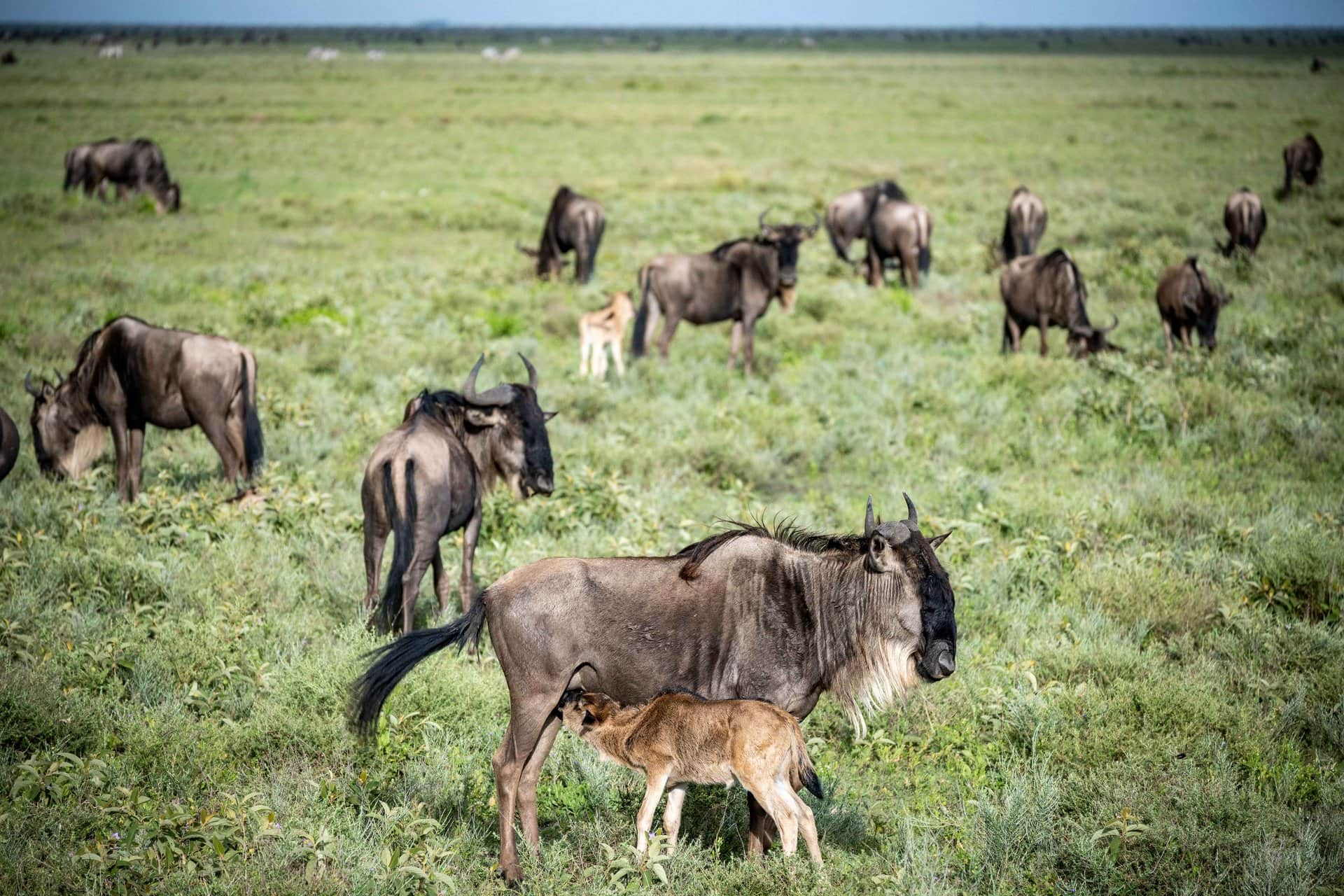
Recommended safari tour:
Serengeti Calving Season - The Authentic Migration Experience
March, April & May
By mid-March the clouds are usually gathering with real intensity. The air is heavy and, away from the elevated lands in the North and West, the humidity is starting to build significantly. The rain eases the oppressive air but floods great swathes of the country. Vast areas may be submerged and many of the roads in the national parks of Tanzania become impassable.
So, could the rainy season really be the best time of year to visit Tanzania? Well, perhaps it could?
For those who love to break the mould, to escape the crowds, to risk a miserable failure of a holiday for the chance of a life-enhancing experience few have ever managed, this could be their moment.

There are very few scheduled air services into the parks, and many camps and lodges may be closed, but then some are prepared to brave the weather, to try and grab some business from the brave/foolhardy folk willing to have a go. They are likely to offer great prices. For the intrepid traveller, happy to take whatever the elements can throw at them but who may just find themselves witnessing the very best mother nature can produce in the kind of splendid isolation usually reserved for only the most privileged, this is a great time to go.
STAR OF THE MONTH:
Inevitably, it is impossible to pick a star park to visit in a time of such unpredictability. At this time of year, it is best to book late having done your homework on conditions across Tanzania.
The main tracks through most of the parks are maintained to remain open in the rains because the rangers need to get through. Even with no side tracks to explore, there are often so few tourist vehicles that these main roads are blissfully quiet. Most of the animals would rather walk on dry land and so, with such little traffic around, many can be found walking the thoroughfares which are likely to provide the animals with their driest passage.

Recommended safari tour:
June
Perhaps the toughest month to justify a claim as the best, there are still many pluses and, if you pick the right spot, a great safari is there for the taking.
Coming just after the main (Masika) rains, it is still a quiet time with operations building towards the busy July & August period but with far fewer visitors. The weather is perhaps the nicest of any month for those coming from the Northern hemisphere. The daytime temperatures a generally in the mid-20s not the early-30s of late in the year and the evenings often require a fleece around the fire and the cover of a full duvet at night.
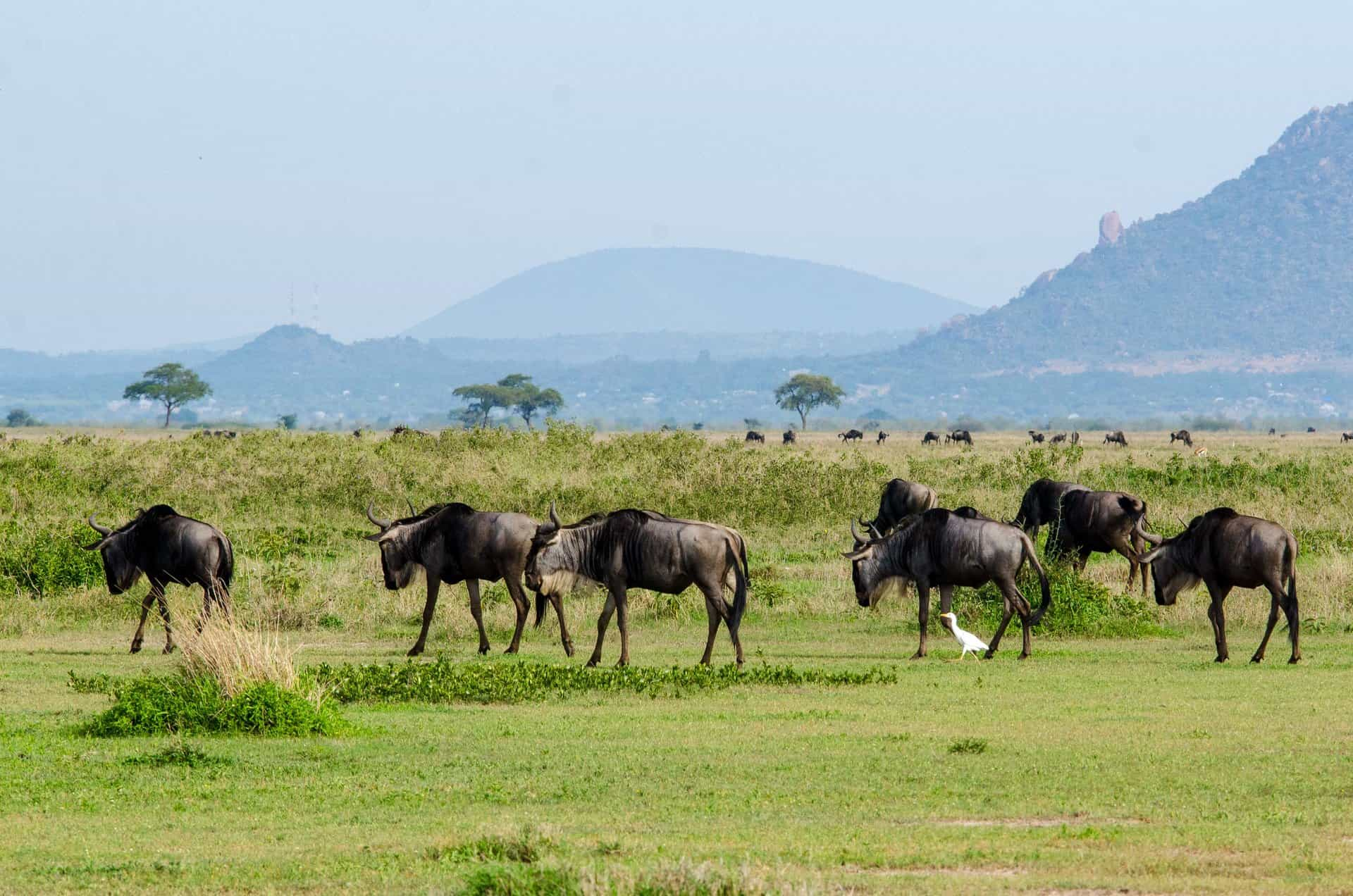
The parks are green and many are in full bloom. In Nyerere NP, elephants may be seen returning from rainy season migrations out of the park, wandering through the blooming cassia bushes and a multitude of brilliant yellow flowers. The downside of this, in many parks, is that the grass is often high; too tall for the grazers to munch on and an obstacle to game-viewing until it dries sufficiently for rangers to begin their early burn (usually in July). The practice is to remove the grass in sections to avoid dangerous fires which can destroy large areas later in the season.
In Serengeti, the migration moves into the Western Corridor early in June and stays until well into July. This is a great time to come and see the vast herds, because many seasonal migration camps do not both with this relatively short season, taking their facilities directly North to the Mara River in June, long before the animals move that way. As such, there are far fewer vehicles out on the racks amongst the gnu. Although the banks of the Grumeti River, which runs through the Western Corridor into Lake Victoria, are much less exposed, it is still possible to see the drama of crossings as beasts search for the best grass on each side.
STAR OF THE MONTH: SAADANI NATIONAL PARK
For many the boat safari in Saadani is a wonderful experience offering close up encounters with hippos, crocs and abundant birdlife. It is also one of only two parks where boat safaris are possible.
In June, with the rains not long over, freshwater courses down the Wami river pushing back the Indian Ocean, out well beyond the river mouth. This encourages crocodiles to sit more comfortably on banks, all the way to the sea. Boat safaris at this time of year offer prolific croc sightings, often at very close quarter.
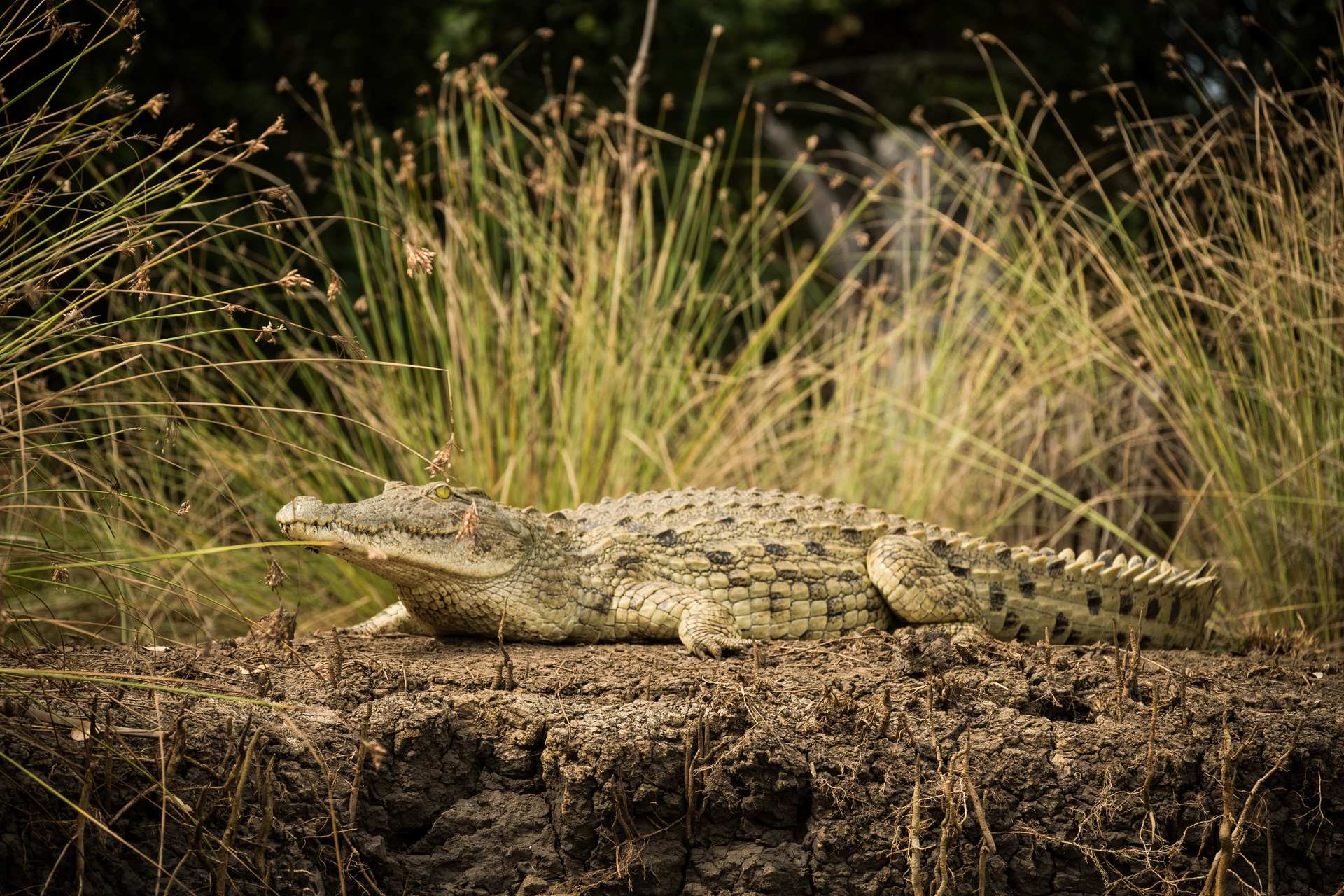
Further North, in the area of buyuni, the road is built up to cross the middle of a large swamp which dries as the season progresses. In June, the area is still very wet from the rains and nightfall brings out the displaying fireflies in their millions. Picture Wembley stadium, Elton John singing candle in the wind, and tens of thousands of swaying lit phones. The natural version is of course, infinitely better, with the crickets and frogs providing the tune, occasionally with solos from the Babs Camp lion pride male.
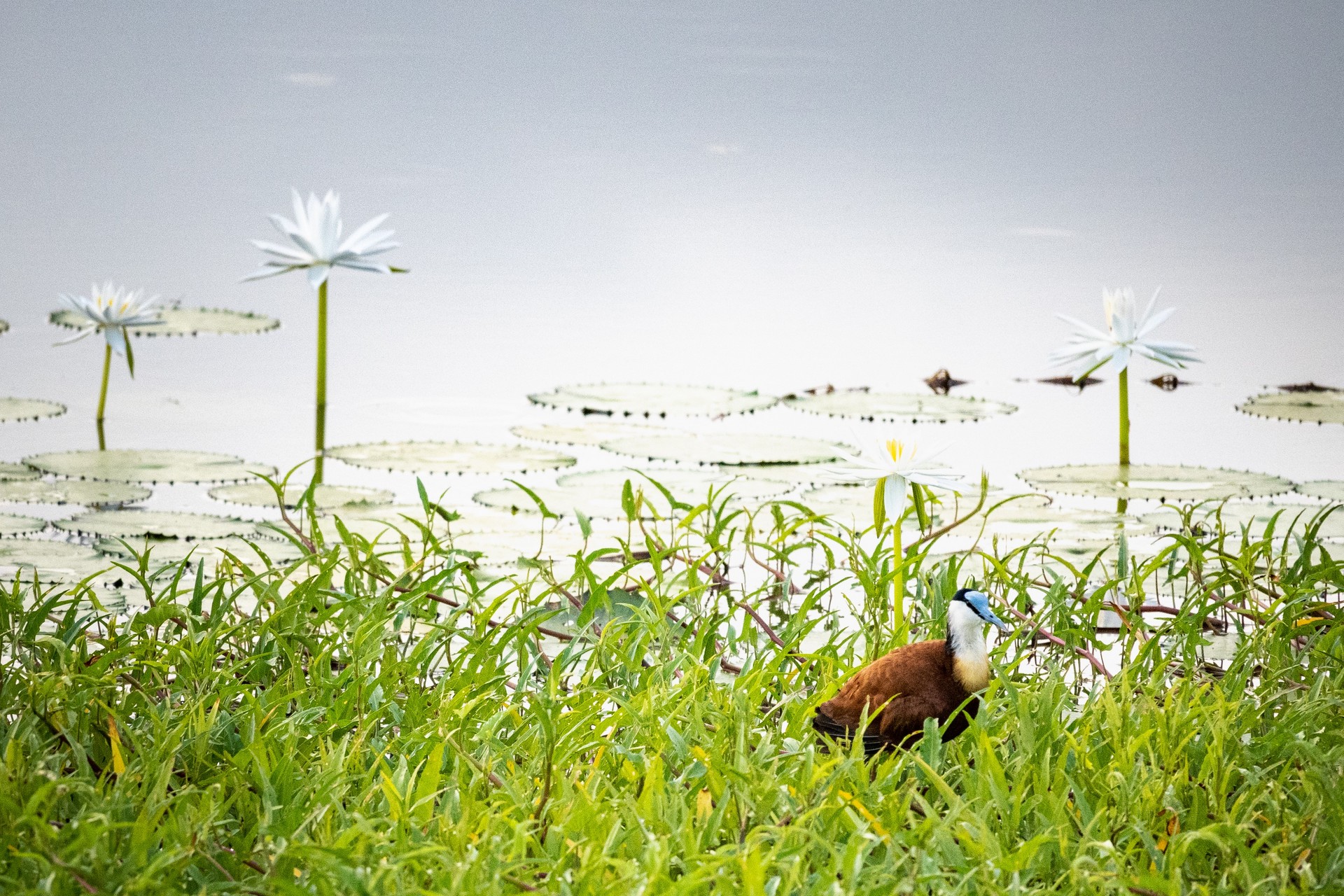
Recommended safari tour:
Zanzibar Beach Holiday & 3 day Safari
July & August
Few will be surprised to hear that July and August is the busiest time of year to visit Tanzania. Inevitably, there are many families and prices, particularly for international flights, will be at their highest. That said, if you are a family and the available calendar is limited, from a wildlife and climate perspective, this is an excellent time of year to visit.
The parks are still green and pleasant, although sections will be burnt or burning, particularly in August. The long grasses have generally gone allowing good spotting and animals are beginning to concentrate into larger numbers. Although what I’m about to say will not suit many, the extra vehicles out searching will make spotting all three big cats easier. For mums and dads this could well be a bonus when to comes to coping with short attention spans and pressure to get back to the lodge WIFI from younger members of their party.
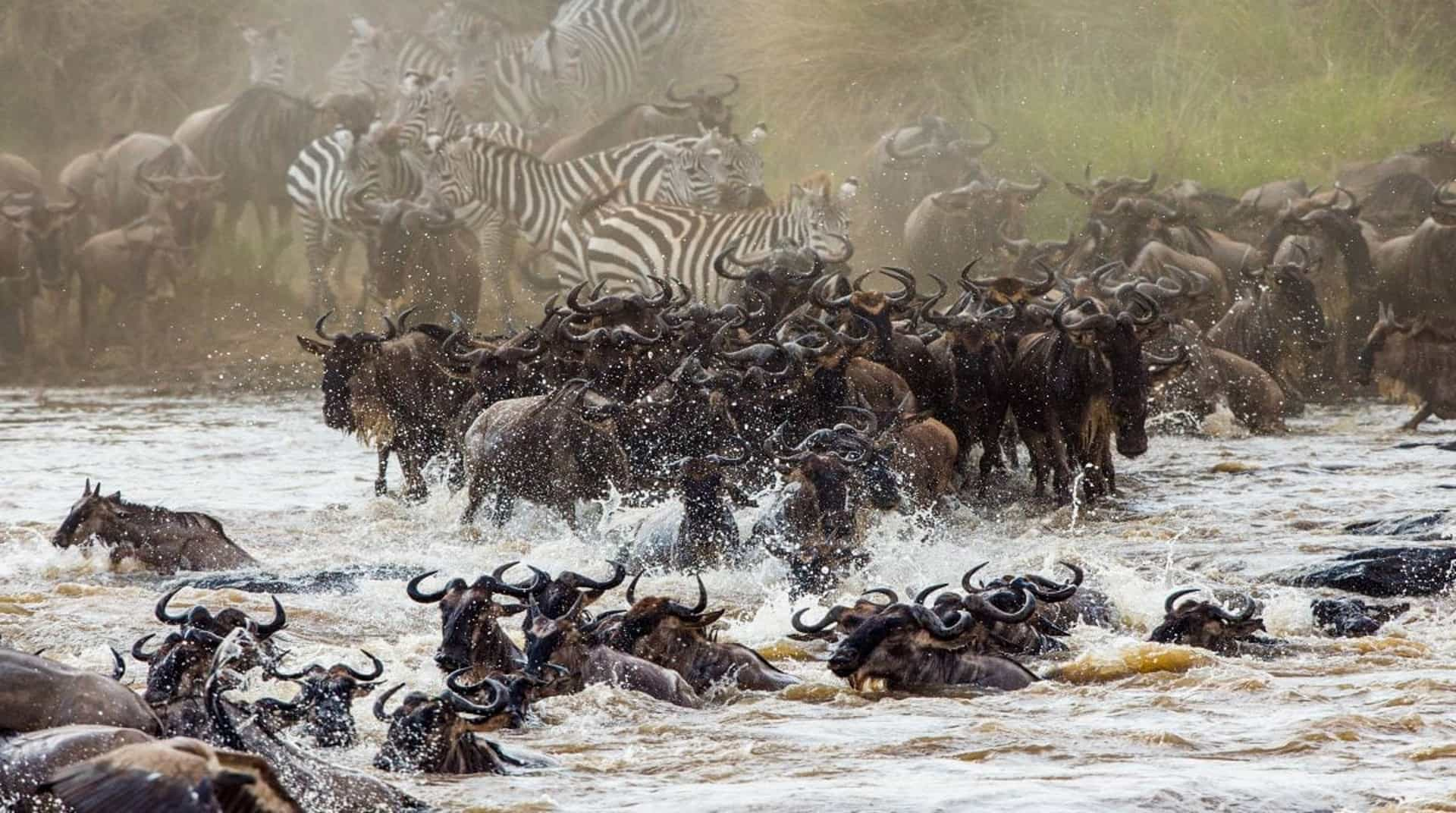
STAR OF THE MONTH: SERENGETI NATIONAL PARK
Firmly established as one of the greatest wildlife spectacles on earth, the migrating gnu & zebra flinging themselves into waters of the Mara river is a spectacle to make your jaw drop. It all starts calmly enough with various sized herds gathering on the banks and moving back and forth, up and down, at crossing points used annually for as long as the phenomenon has existed.
Eventually, sometimes after many hours of nervous procrastination, one animal will jump in. In then becomes pandemonium. The several hundred which have been skirting the bank are joined by hundreds, sometimes thousands more, seemingly from nowhere. Wild-eyed and out of control, they throw themselves into the water, often emerging out of the water at the worst possible steep bank where many will drown, trampled under the turbulent water by frantic followers. For the resident crocs, this is easy pickings, and only rarely do they need to pull down a live animal. There are bloated carcasses everywhere, often snagged on rocks and building into a stack of gently rotting flesh.
Recommended safari tour:
Classic Serengeti and Ngorongoro Family Safari Holiday
September
September is likely to be the height of the dry season. This can be a time of high drama; existence at its most brutal; terrain often burned and ugly, animals sometimes emaciated and desperate. The season is polarising; often harsh and ugly but exhilarating and dramatic.
It is not the case everywhere. The Serengeti migration follows its own micro-climate and usually avoids the worst of any drought but move to the East of the park and over the border into the Ngorongoro Conservation Area and life starts to look very harsh. Maasai move their herds huge distances across grassless plains, looking for water. What little they find; they must share with all the wildlife of the area.
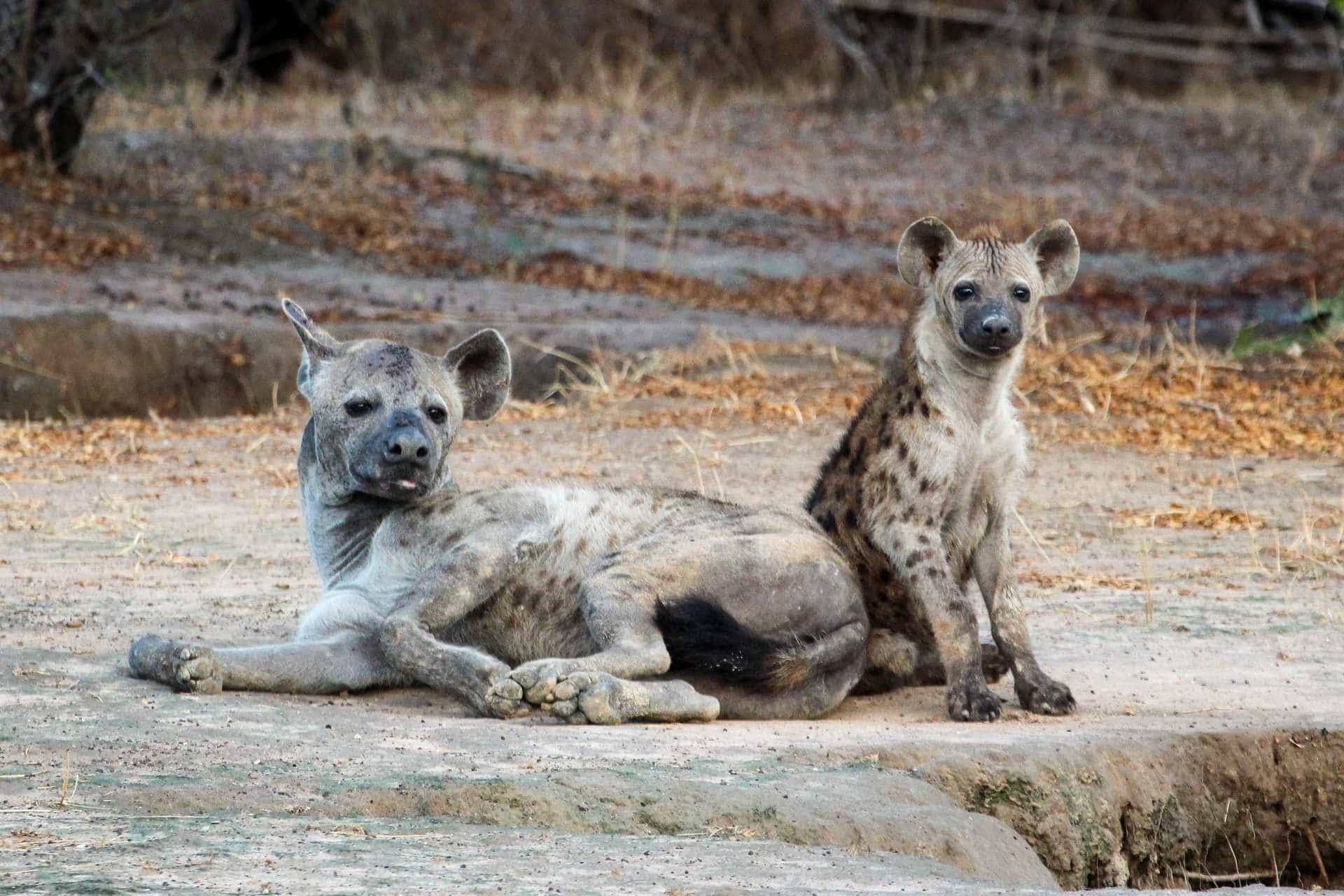
In Selous/Nyerere the wildlife congregates around the disappearing lakes formed when the Rufiji River floodplain fills from the annual rains. Vegetation is extremely sparse, even here, but the waters of the lakes are vital to keep the animals alive. The massive populations of both crocs and hippos are forced into closer proximity. Relations in the hippo pods become fractious and fights are never far away. Drinking from the water’s edge becomes much more dangerous because there are so many crocodiles lying low in the water. Some years the treacherous mud which borders the remaining water traps heavy buffalo which must then wait to starve or be picked off by the predators.
In Tarangire National Park, the river of the same name becomes a magnet for incredible congregations of elephants. Hundreds gather together, stripping the large trees with deep roots which line the riverbank and digging through sand along its course in search of the palatable water which still moves below. All manner of wildlife follows the elephants to quench their thirst from the holes in the sand left by the great pachyderms.

STAR OF THE MONTH: RUAHA NATIONAL PARK
Ruaha National Park, has perhaps the starkest seasonal change of all. Water is very hard to find in September and animal concentrations can be incredible. Storks and herons gather in hundreds around drying pools picking off the ever more concentrated fish struggling to stay immersed.
Life is very tough for young buffalo on the fringes of massive herds. Many weak animals will starve or die of thirst, many more will be picked up easily by predators. The experience can be at once breath-taking and heartbreaking and serves as a stark reminder of life at its most fundamental.
One note of warning; beware the tsetse flies! No one is going to be affected by sleeping sickness but they hurt when they bite and covering up against them is a good idea.
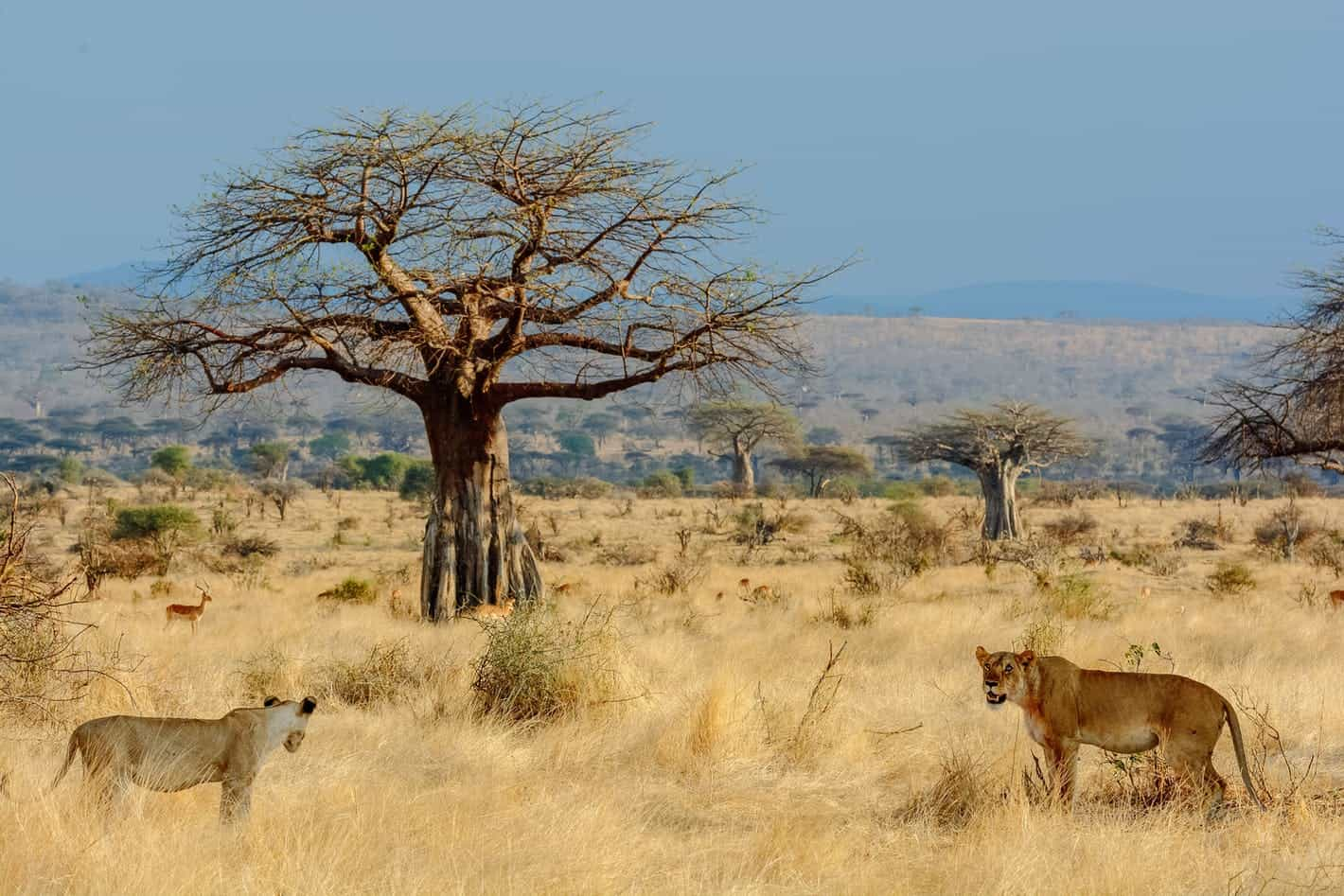
Recommended safari tour:
Tanzania Safari and Zanzibar Beach Holiday
October
October is a month of change. The first rain after the dry season. The spark of so much new life.
It is a time to watch out for the mighty baobab trees flowering in parks such as Tarangire, Ruaha, Mikumi & Selous/Nyerere. They are probably Africa’s most iconic tree and are often called the upside-down tree because they are without leaf, let alone flower for such a large part of the year. When the large white and stunningly beautiful flowers do arrive, it is for a few short days only. Across most of Tanzania the dry, burned landscape bursts back into life and the short, succulent new grasses provide much needed bounty for the hungry grazers. Unsurprisingly, this coincides with the first seasonal offspring. Warthogs are a particular favourite and hilarious piglets arrive in great numbers across parks such as Saadani and Selous/Nyerere.
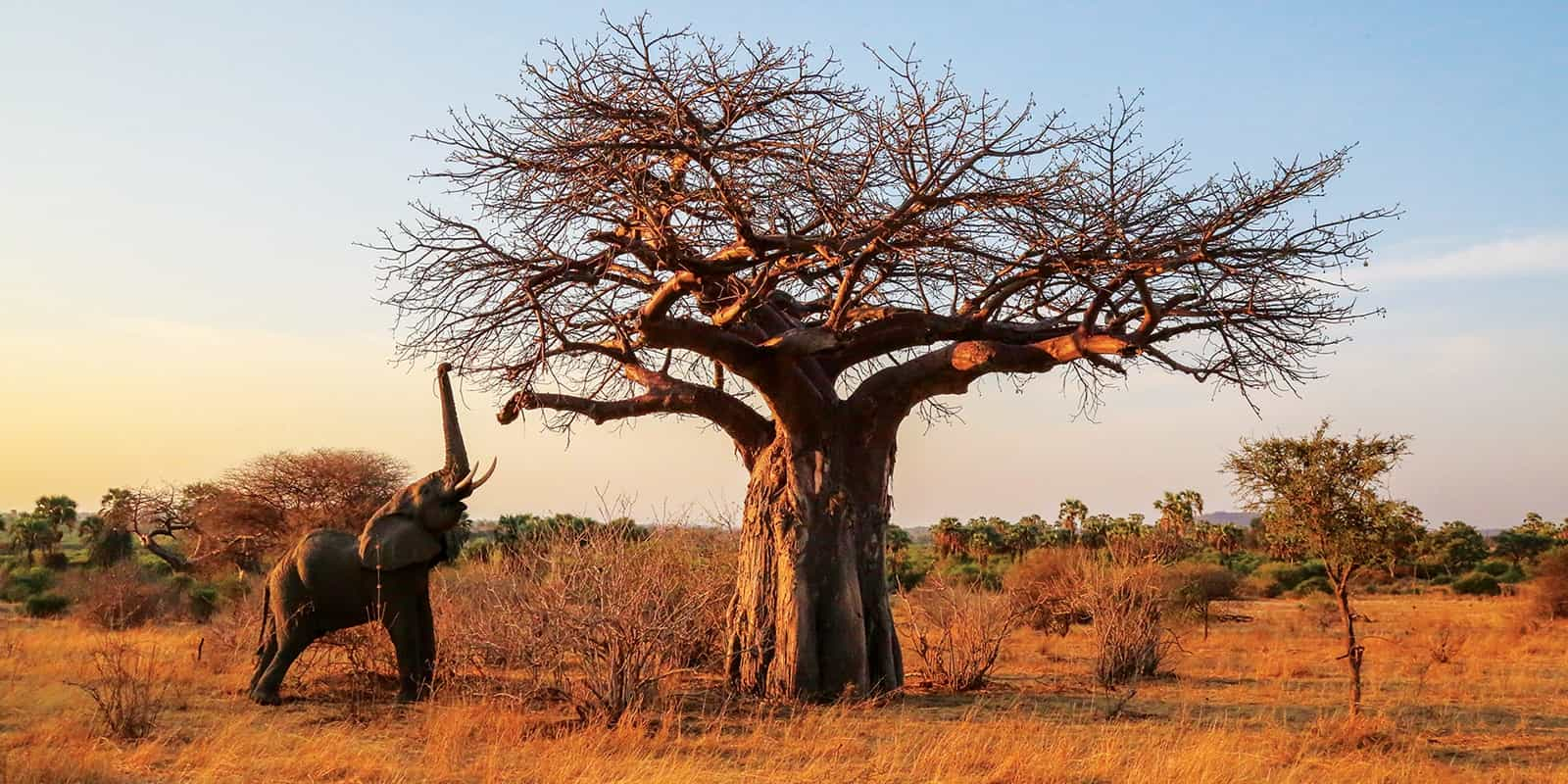
Lion concentrations in the North of the Serengeti can be incredible at this time. Once the migrating animals arrive in mid-July, new predators begin to join the resident population because of the sheer density of prey. There is no need to fight for extended territories and rules are relaxed to some extent. By October, if the wildebeest have not yet moved on, there are likely to be prides, sub-prides and nomadic lions densely packed into a small area. They are seen daily on top of the famed Kopje rocks.
Whilst not the main season, October is a popular time of year because of the natural beauty it ushers into many parks and because the herds begin to look much healthier.
This period of new rain also one to bring out a profusion of insect life. This might not be to everyone’s cup of tea but id often a fascinating experience. Cicadas may gather in hue numbers across just a handful of trees and begin to call whilst squirting sap, drawn from their host trees prodigious distances. Anyone who has experienced the noise levels from just a single cicada nearby, will understand the incredible din coming from these gatherings. A little more unnerving may be the awakening of termites, ready to set up new nests. Usually over the course of just a day or two, after the first heavy day’s rain, the air will darken with millions of termites, sparked into life. They land in massive numbers, blanketing the floor with their discarded wings before moving off on land to start the new nest.
To many people in Africa, they are a traditional delicacy, and light traps are set to attract them. They are also a seasonal protein-fest for birds and animals. It is not usual to find large open expanses, filled with marabou storks and several species of raptor hoping about and feasting on the termites.

Recommended safari tour:
November & December
Statistically, November is the period of the short rains (the Vuli) and, as such, theoretically a period to avoid. In truth, the rain may come as early as October and often doesn’t appear until the back end of December, just in time for the Christmas rush!
So it is that November and the first half of December can be an amazing time to visit. It is extremely quiet because of the aforementioned Vuli rains and is, of course, traditionally a quiet time for holidaymaking worldwide. This will likely improve your chances of getting an exceptional deal whilst enjoying popular destinations without the usual crowds and having the lesser known areas virtually to yourself. To some this kind of exclusivity is priceless and something you would usually have to break the bank for.
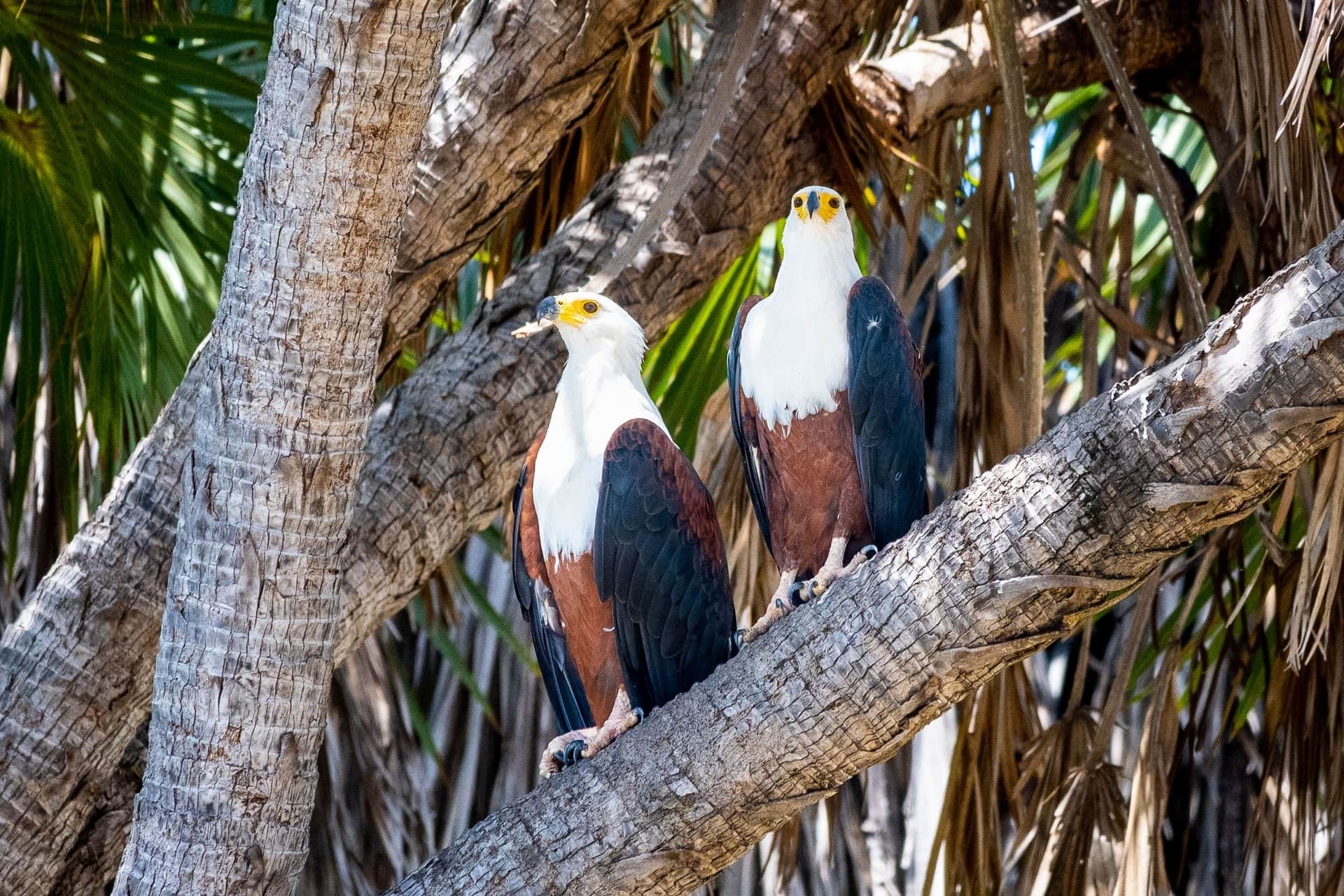
Another wonderful feature of this time of year is that most of the animals which give birth according to a seasonal pattern, do so at this time of year. With the exception of the migrating wildebeest of Serengeti, all other gnus across Tanzania (including a considerable number of non-migrating wildebeest in the Western Corridor of Serengeti) have their young in December. Impala, warthogs, hartebeest and many more animals are already nursing vulnerable offspring by the start of November. You are likely to be cooing ann giggling in equal measure, at the sight of young impala and warthogs and you may just experience the thrill of witnessing a live birth.
As a footnote, the back end of December is unsurprisingly much busier, but a wilderness Christmas can be a wonderful experience. It makes a great alternative to the usual festivities at home and is sometimes a choice for those feeling they a break from the norm.
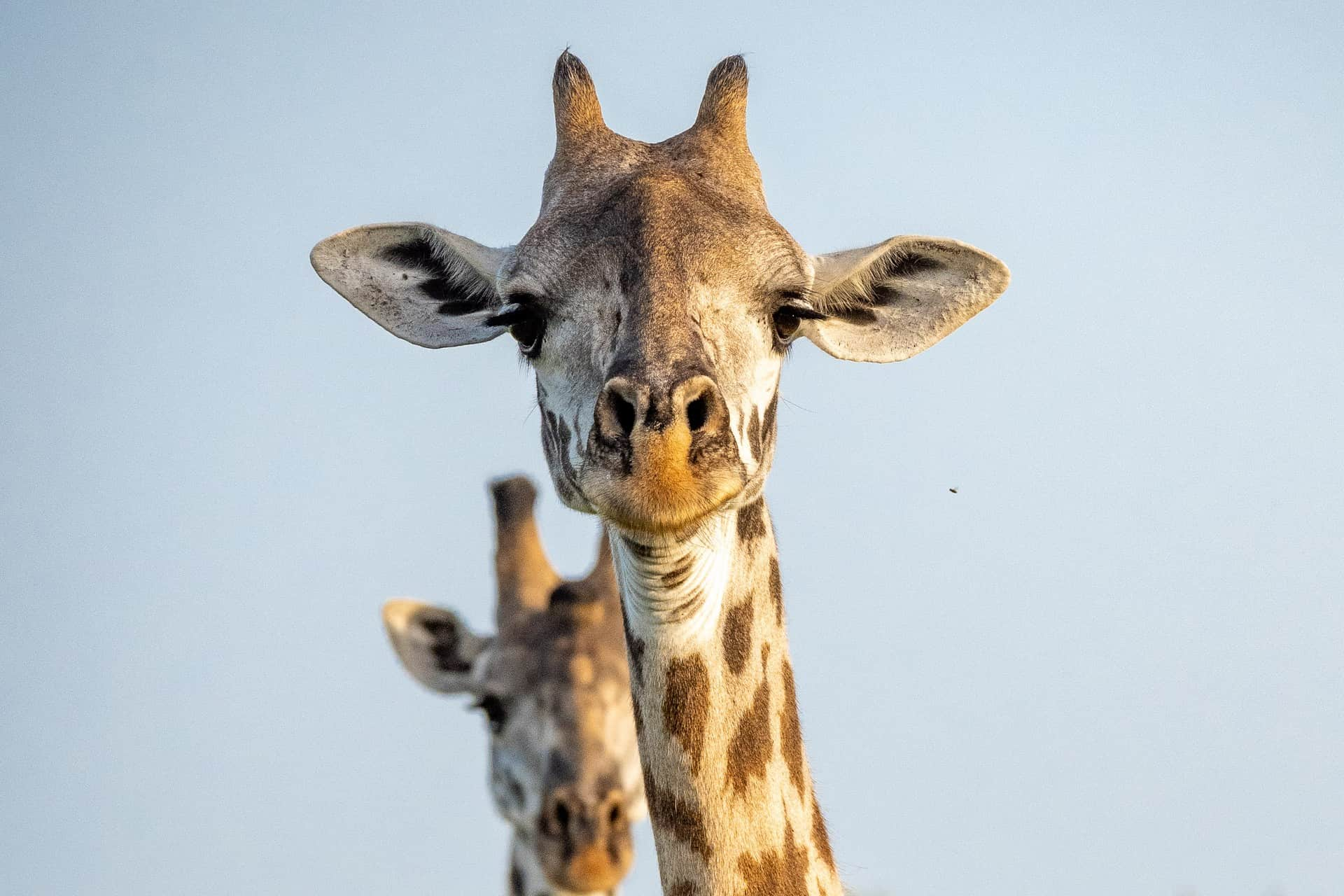
STAR OF THE MONTH: Gol Mountains in the Ngorongoro Conservation Area
Other special attractions may include the emergence of the extremely rare Roosevelt sable antelope in Selous/Nyerere NP but, as a star turn, a truly unique safari could be to visit the Gol Mountains in the Ngorongoro Conservation Area. From late October, the migrating wildebeest of the Serengeti usually begin to head South and East. By late November/early December the remote Gol Mountains which sit between the towering craters of Ngorongoro and the vast plains of the Serengeti. It is an area where the famous Maasai nomads are still allowed to roam with their livestock. Walking with the Maasai, surrounded by tens of thousands of wildebeest is an enthralling possibility here and something which is simply not possible anywhere else. It goes without saying that you can expect to meet no other tourists whilst here and can experience something few ever have.

Recommended safari tour:
